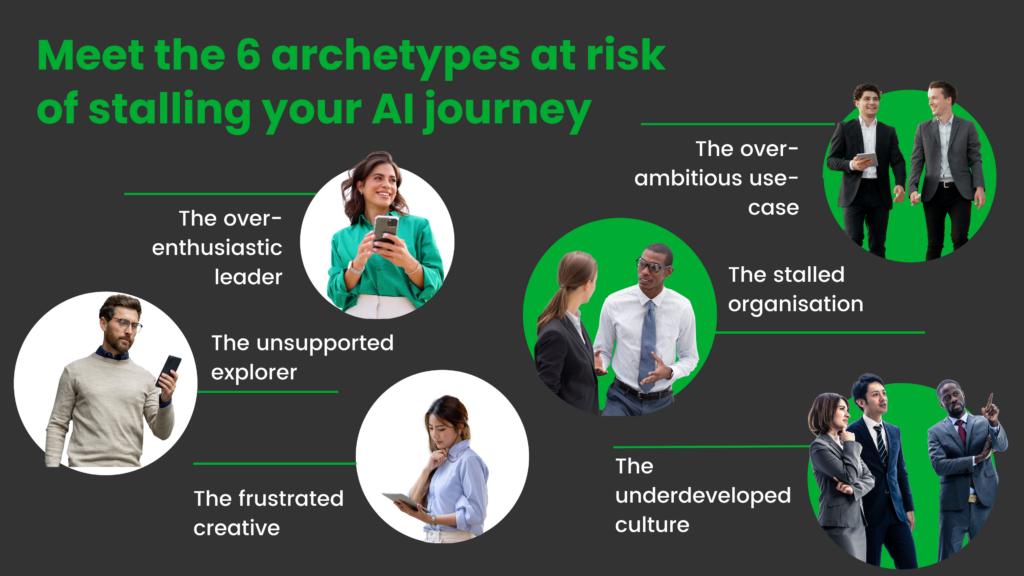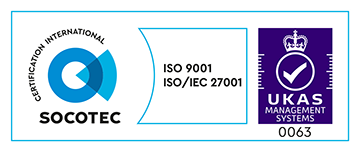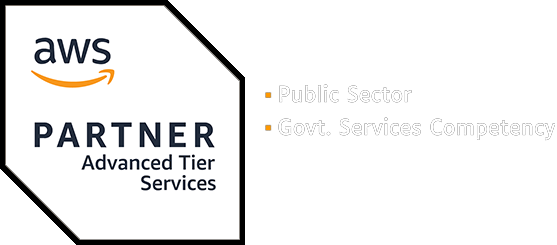AI can transform public safety, justice, and national security – but only with a clear plan. A recent whitepaper by my colleague Jim Stamp, Laying the groundwork for AI, outlines 3 essential pillars for AI adoption: use cases, technology, and culture. These pillars are key to turning AI from a buzzword into something practical that addresses real-world problems.
In my work helping organisations stretch their thinking about what’s possible, I’ve come to realise that cultural resistance is a universal issue. Whether in policing, justice, or border security, people react to change in 2 main ways. Clinging to the familiar and outright resisting anything that disrupts their comfort zones. Or in contrast, runaway change agents who enthusiastically embrace every idea, often without focus or practicality. Let’s face it – AI isn’t about small tweaks. It demands a seismic shift in how we work.
Cultural resistance in public safety is holding back AI
The challenge with AI isn’t just about adoption. It’s about trust. People don’t fear change itself – they fear what it means for them personally. Will it make their job harder? Will it strip away tasks they enjoy? Or worse, will it make their role obsolete? On the flip side, people embrace change when it improves their lives. This is why AI needs to be introduced through carefully chosen use cases that show immediate, tangible benefits.
For instance, I’ve seen early wins with AI in policing and asylum management. AI tools are improving facial recognition, reducing fraud, and prioritising domestic abuse calls. These aren’t just nice-to-haves. They’re significant improvements that directly impact frontline workers and the public.
Fix the basics first
However, basic issues need fixing first (laying the groundwork Jim refers to) before we can fully see AI’s benefits.
- Data maturity: Many public safety organisations lack a clear understanding of their current data landscape. What’s the quality of the data? Where is it stored? Who has access? These are basic questions that even trip up private sector organisations.
- Leadership confidence: Confidence is often lacking. The fear of the unknown leaves leaders hesitant. Without a clear grasp of AI or strong use cases, progress is limited.
- Use case prioritisation: AI’s potential can feel overwhelming. By focusing on a few high-impact use cases, we can start to build momentum and demonstrate the benefits.
Focus on use cases that solve real problems
The first step in making AI work is rooting out use cases that tackle real problems. My recent review of AI use cases across justice and emergency services, including the Ministry of Justice, Home Office, and 43 police forces, revealed an exciting opportunity. While many organisations are currently exploring AI through proofs of concept, many still need help to move towards enterprise-level deployment. The review brought home to me how crucial it is to avoid getting stuck in endless pilots.
Using AI in public safety to solve practical, everyday challenges – like improving police response times or monitoring offenders – can drive real-world change.
And there are already some promising examples of AI making a real difference. For example in policing, AI is being used to analyse 999 and 101 calls related to domestic abuse, quickly identifying threat levels to prioritise responses and enhance safeguarding. What’s even more impressive is that some of these solutions are working without relying on extensive historical data – which is often where data quality issues cause delay. If you haven’t already read it, I recommend checking out my previous blog, Challenges in Public Safety Services, for a deeper dive into the issues that AI must address in this space.
The right technology for the job
Once you’ve overcome the cultural hurdles and identified the right use cases, the next step is ensuring the technology can deliver. AI needs to be flexible, scalable and able to integrate with existing systems. In national security, for example, AI could dramatically enhance intelligence gathering – but only if it’s robust enough to handle real-time data and operate across different agencies.
Technology also needs to work for the people using it. Frontline workers rely on tools that are intuitive and reliable. If AI systems are clunky or don’t fit with existing workflows, they won’t be used effectively. Public safety organisations must collaborate much more closely with tech providers who understand their unique needs and challenges. Building these strong relationships not only helps to deliver more practical solutions but also speeds up great outcomes.
Driving meaningful transformation in public safety
One of the most exciting shifts that AI is bringing, is how it challenges traditional leadership hierarchies. Historically, frontline staff – whether in the police, border force, or probation – have had to wait decades to rise through the ranks before they’re in a position to address the issues they encounter daily. By the time they have the influence to drive change, the problems may have evolved, or the opportunity to act has passed.
AI is cutting through that cycle. It’s enabling those on the front line to identify and act on solutions now. It’s empowering users with low code tools and basic Large Language Models which fundamentally change the way services are delivered. This isn’t a threat to leadership, but a chance to rethink how we take advantage of that knowledge and spontaneous development.
By capturing the insights of frontline workers and prioritising their input, we can create innovation roadmaps and AI use cases that address immediate needs and drive meaningful transformation. This approach shifts power, (better described as actionable knowledge) towards those closest to the problems, allowing solutions to emerge faster and with greater relevance and governance.
Transformers….. leaders in disguise

In addition to the 6 archetypes that are outlined in the whitepaper, I liked the idea of adding a ‘transformer’ archetype. Transformers are the leaders who make AI adoption a success. They identify the right use cases, champion technology that works, and create a culture of innovation., transformers are the bridge between strategy and action. They ensure AI isn’t just a buzzword but a tool that solves real problems and makes a difference on the ground.
For me Transformers are crucial because they do three key things:
Focus on impactful use cases
They spot where AI can make the biggest difference.
Connect leadership and frontline teams
They act as brokers, making sure that leadership priorities align with the real-world challenges faced by frontline workers.
Drive cultural change
Transformers help create an environment where teams embrace AI as a tool to solve problems, not a threat to their roles.
In sectors like public safety, where hierarchical leadership is still common, transformers are key to unlocking the potential of AI. They take the insights from the people closest to the problems – frontline police officers, probation teams, or border agents – and provide leaders with the confidence to act and operate in the wild west.
How to move faster for public impact
If public safety and national security are going to benefit from AI, we need to be intentional. That means focusing on use cases that matter, choosing technology that fits, and building a culture that supports change.
For public services to deliver on key manifesto pledges we need to move faster than we’ve been able to before. This requires leaders to step up, think differently, and break down barriers between technology, civil service, policing, and probation. Collaboration is the only way this is going to work.
One practical step is running workshops to define and prioritise AI use cases. But these can’t just involve senior leaders. As I’ve just mentioned, the need for frontline police officers, probation officers, and others working directly with the public to shape these discussions. In that way we make sure that the solutions we develop are grounded in real needs and deliver actionable results.
By prioritising collaboration and practical outcomes, we can make AI a powerful tool for tackling the challenges we face.
Discover the full picture of AI readiness
To find out more about the pillars of AI adoption and explore the archetypes that drive success in public safety and national security, download our whitepaper Laying the groundwork for AI.
Ready to take action? Get in touch to arrange an AI readiness assessment or a use case workshop. Together, we can define practical, impactful solutions that make a real difference.







